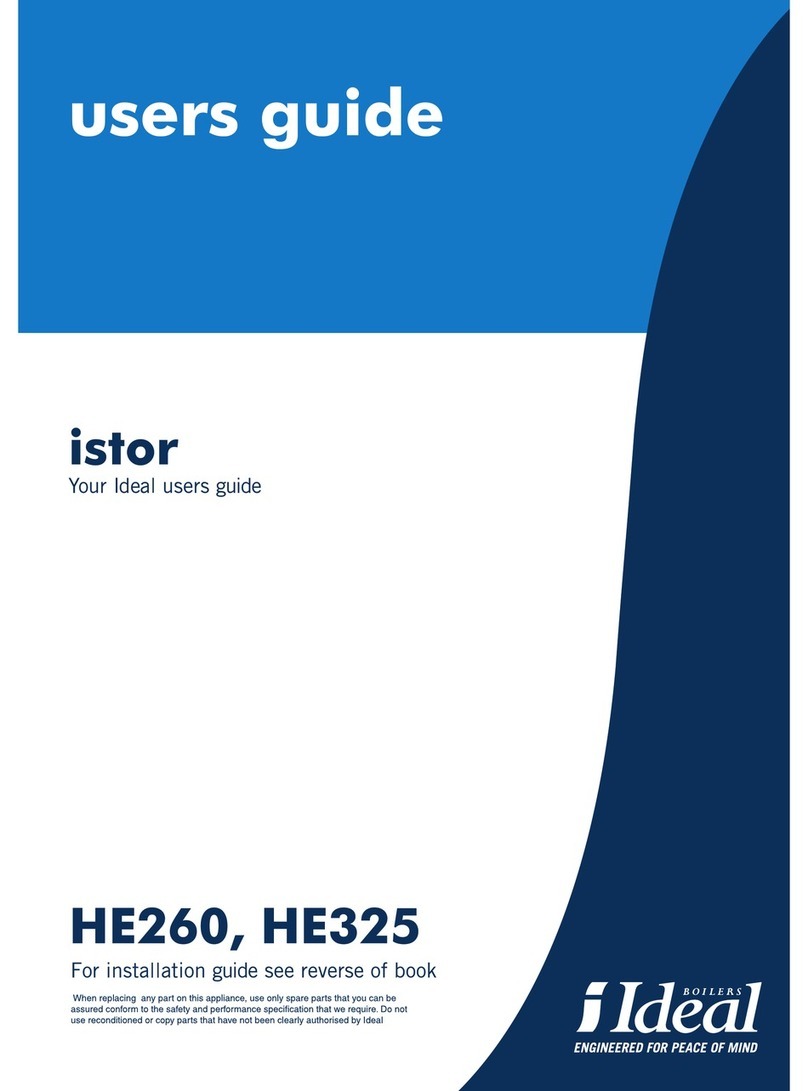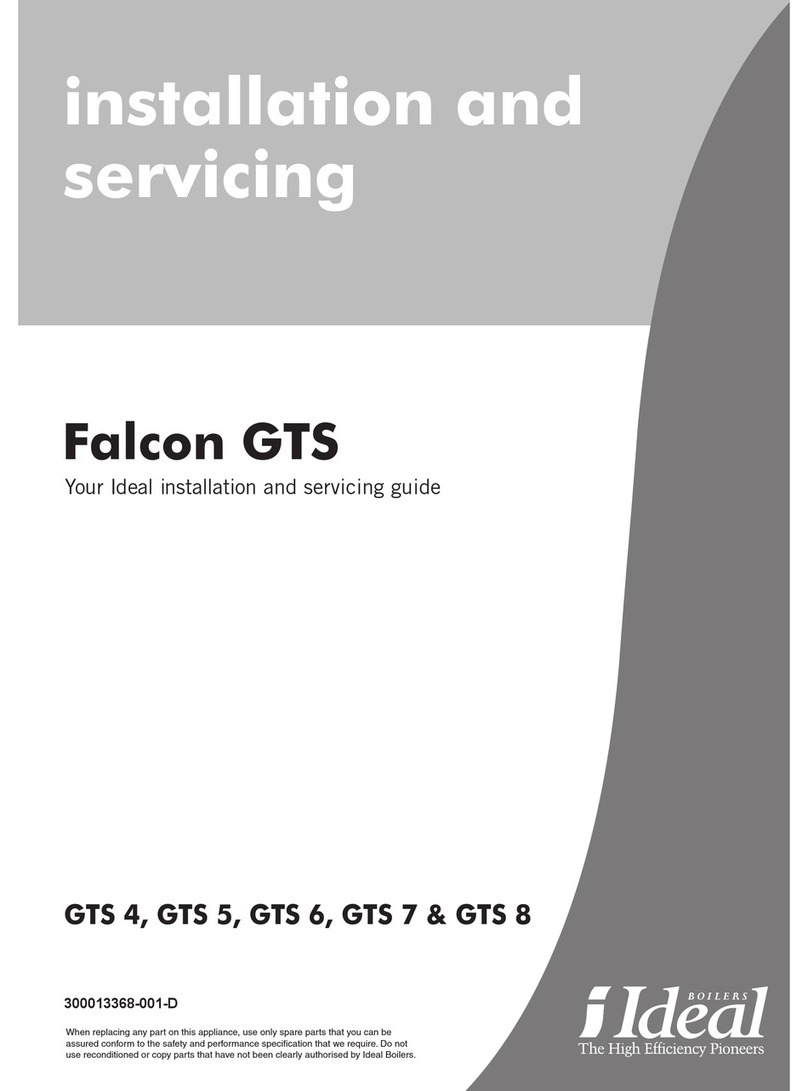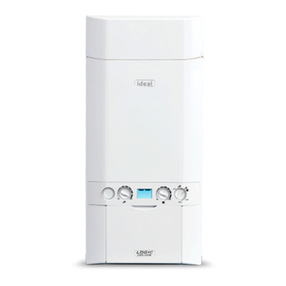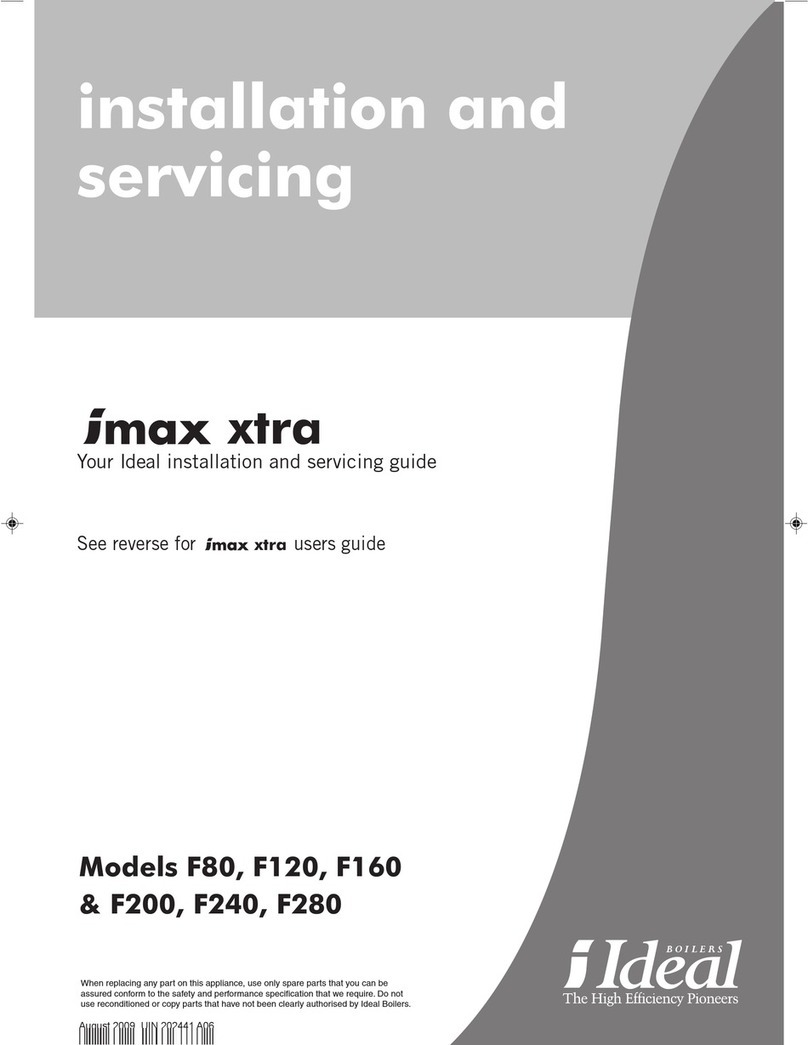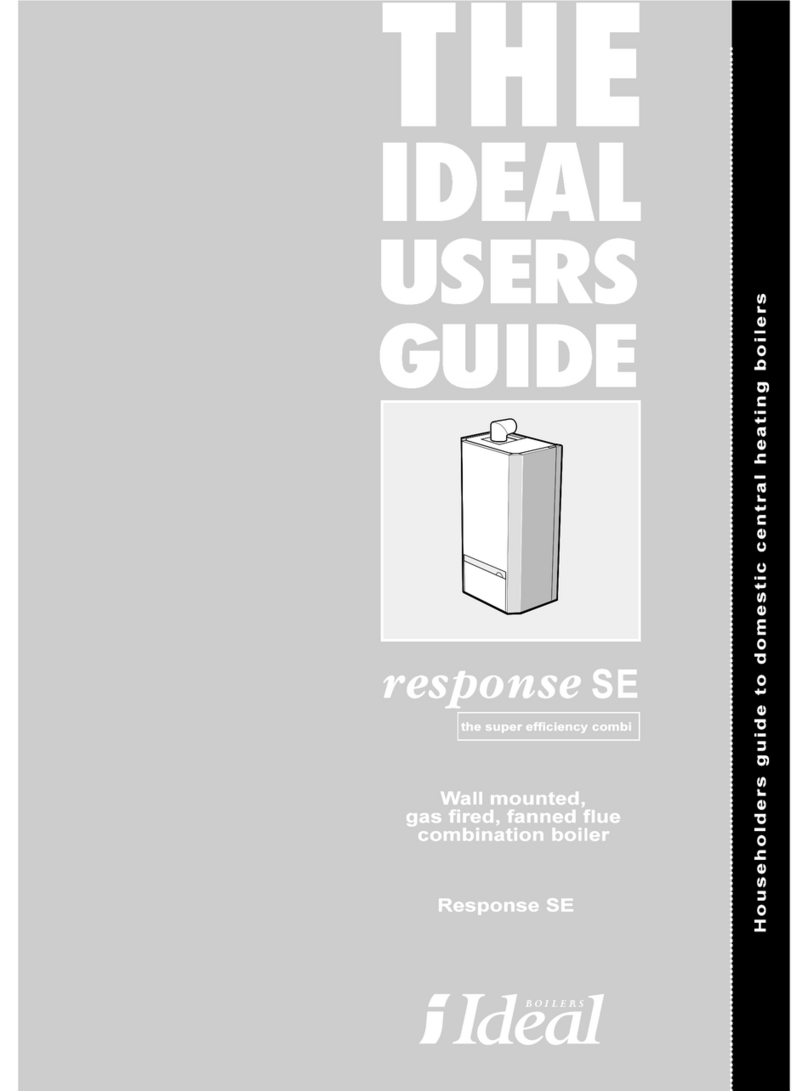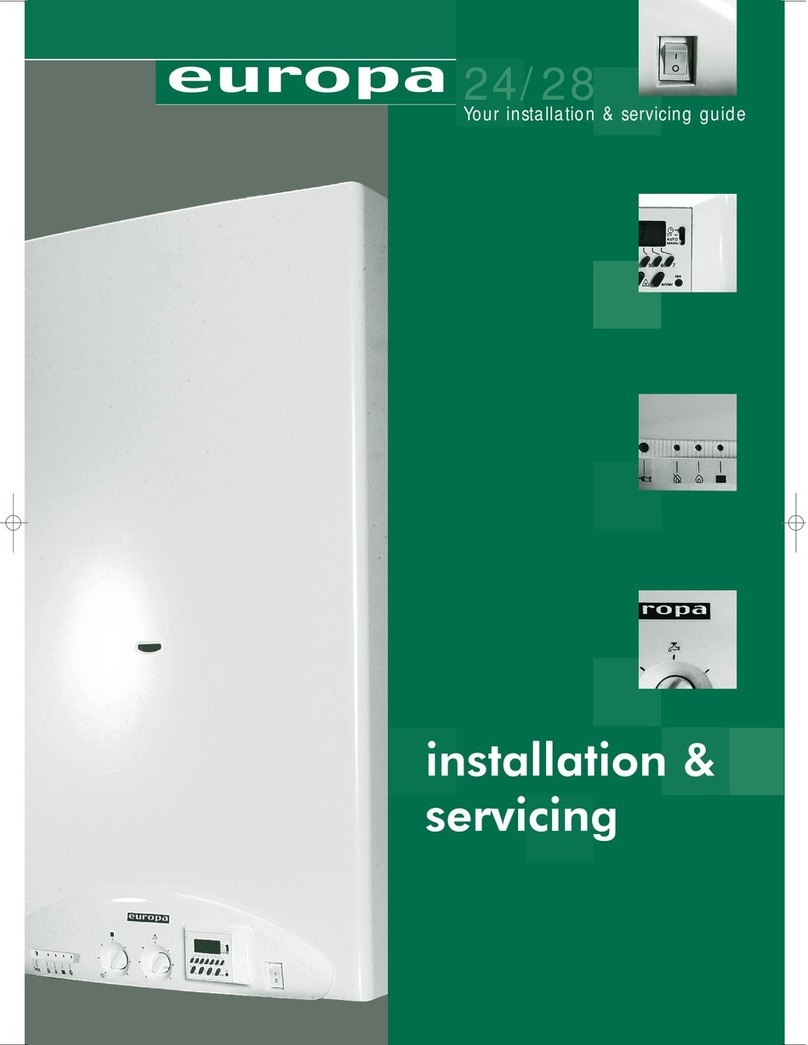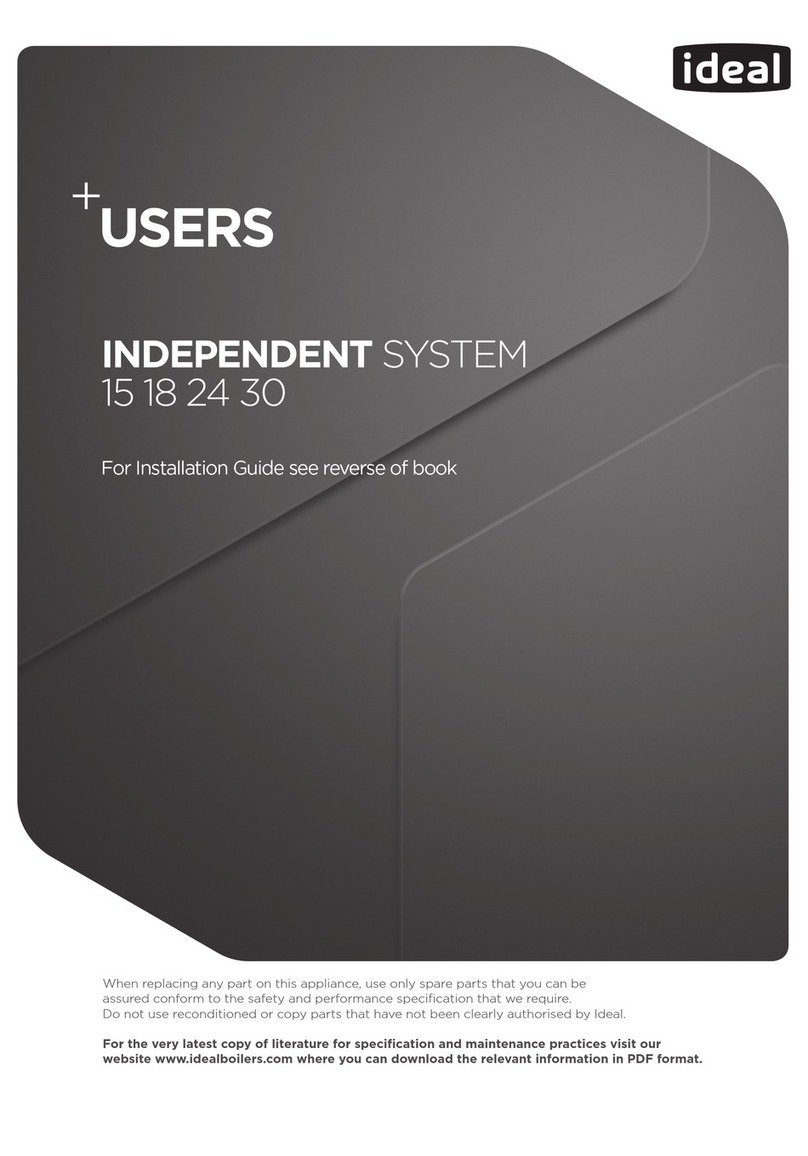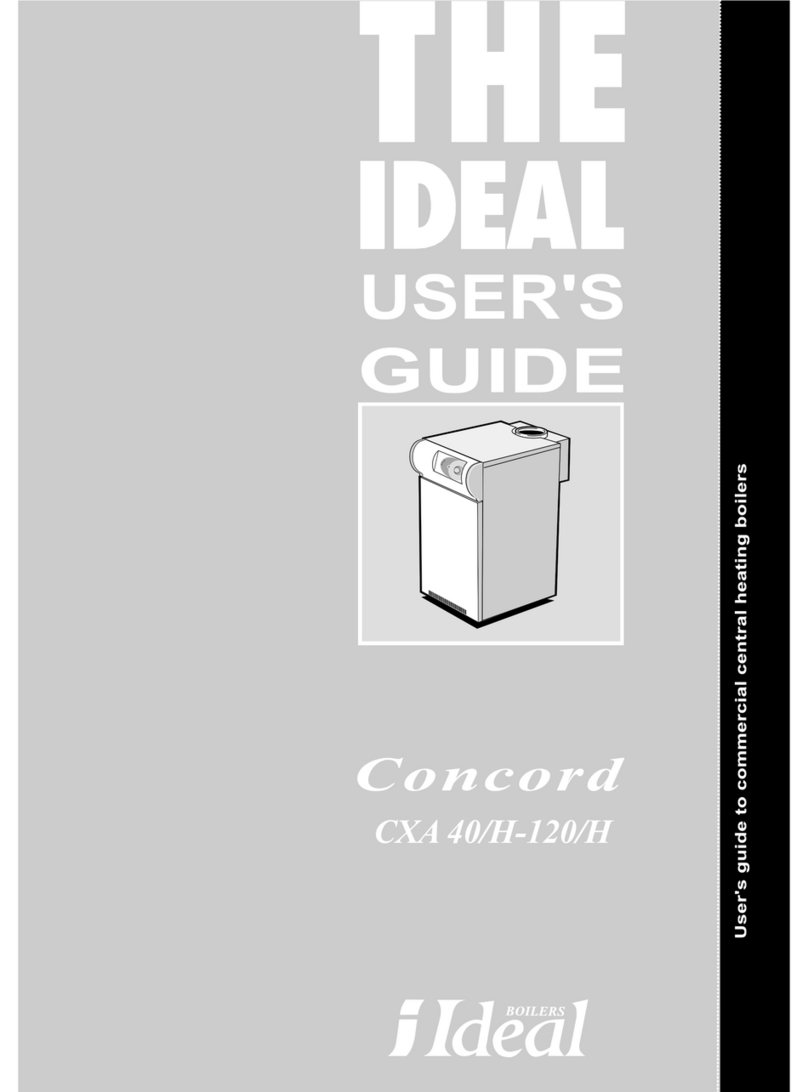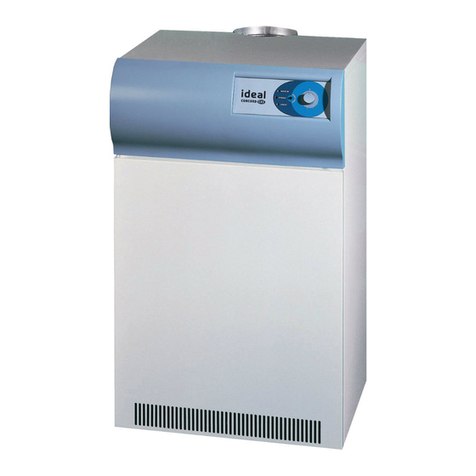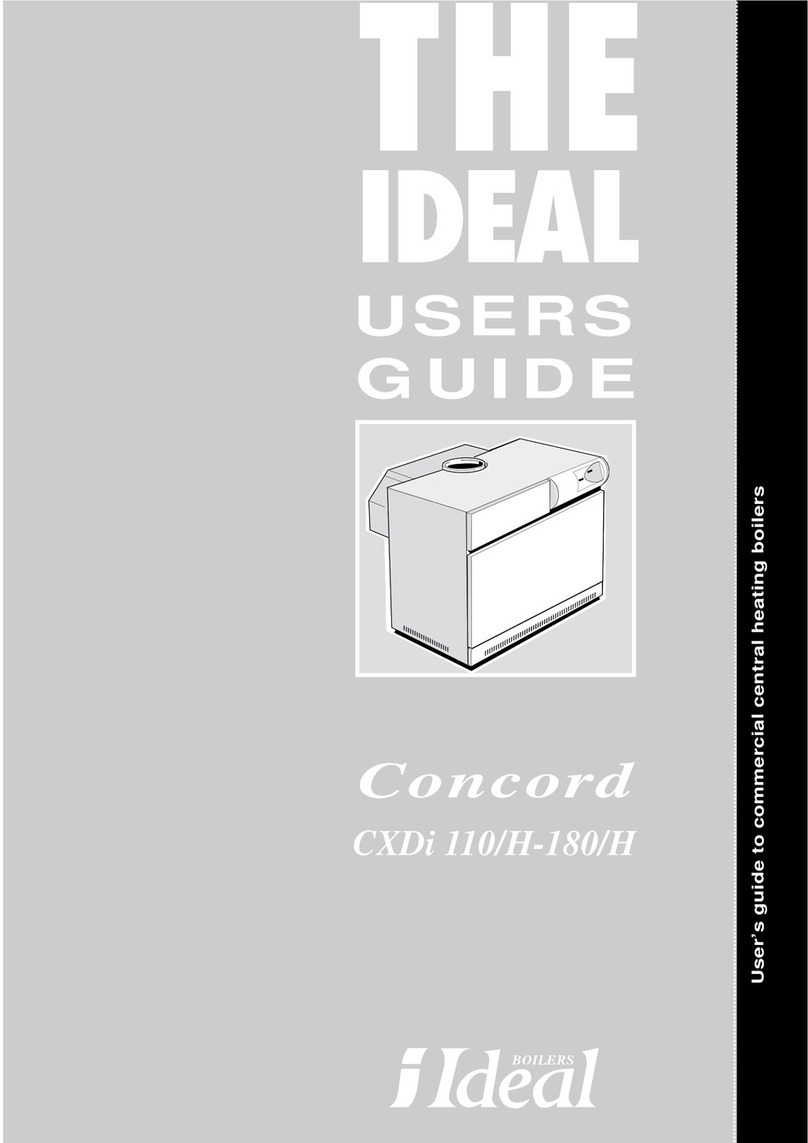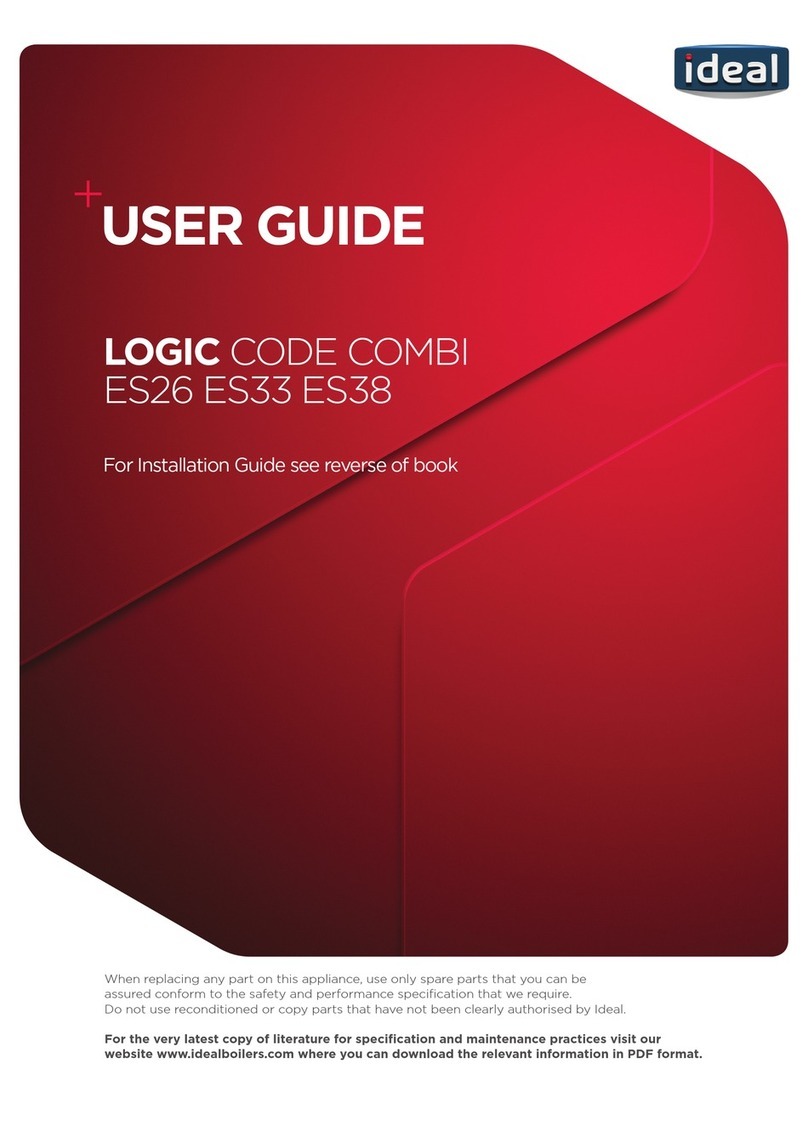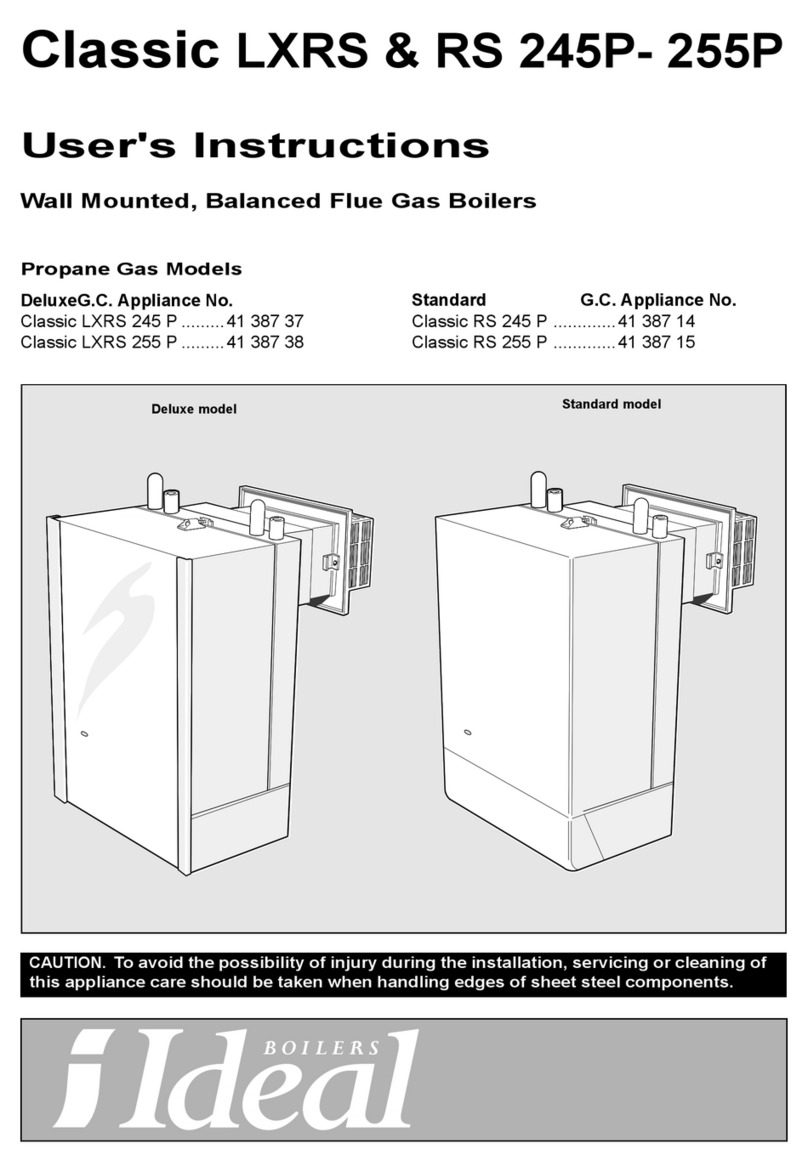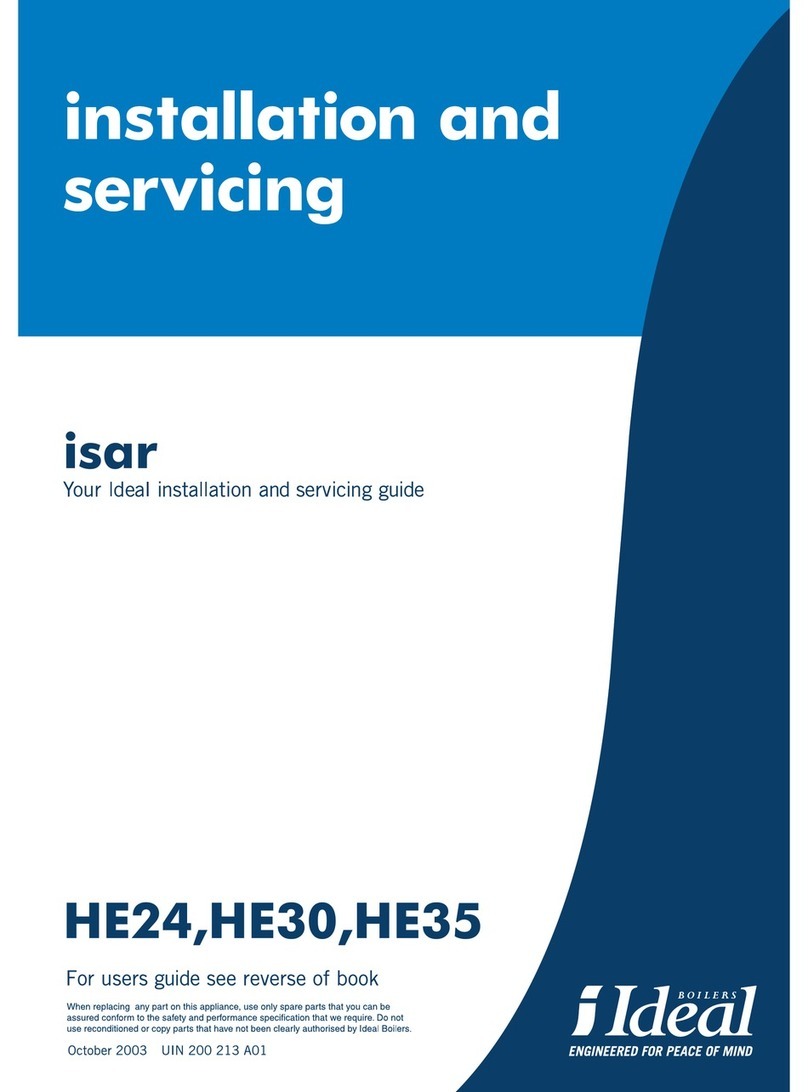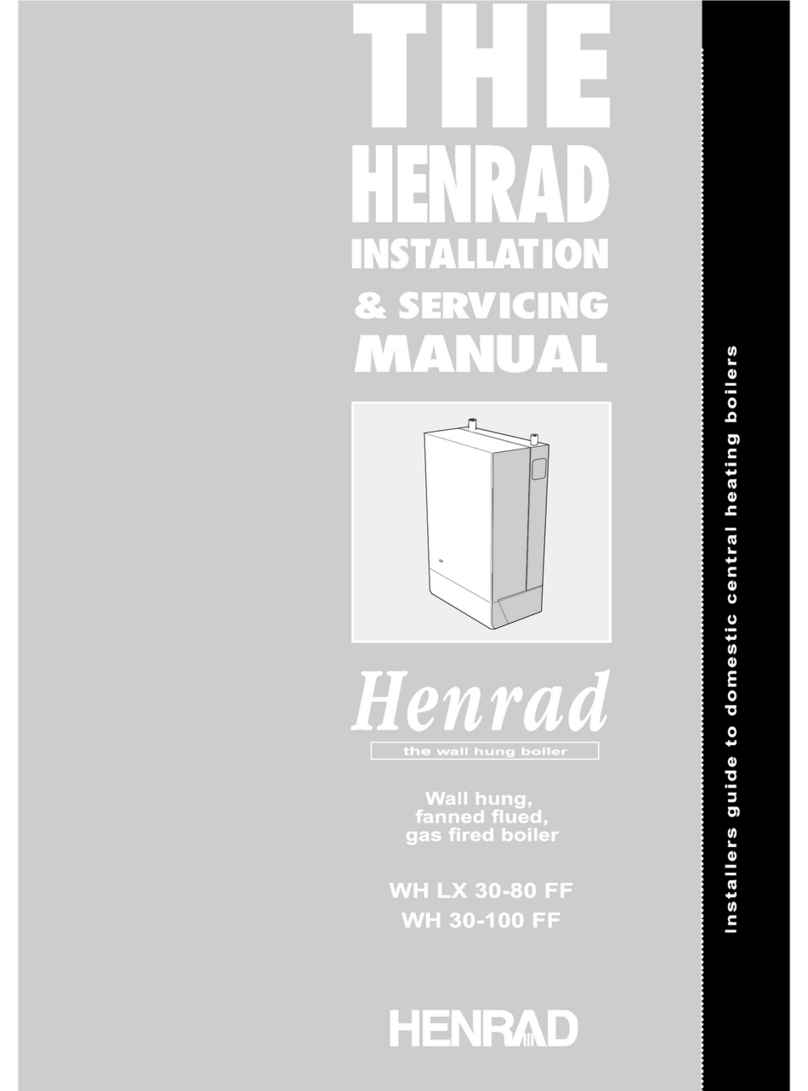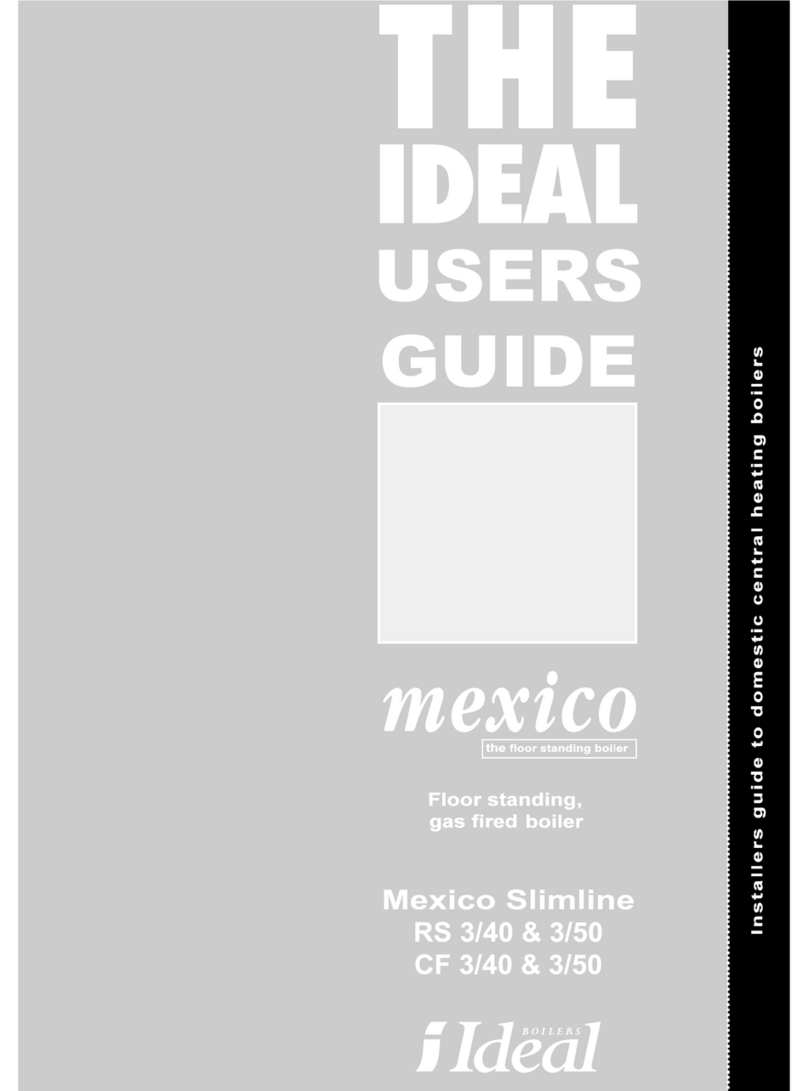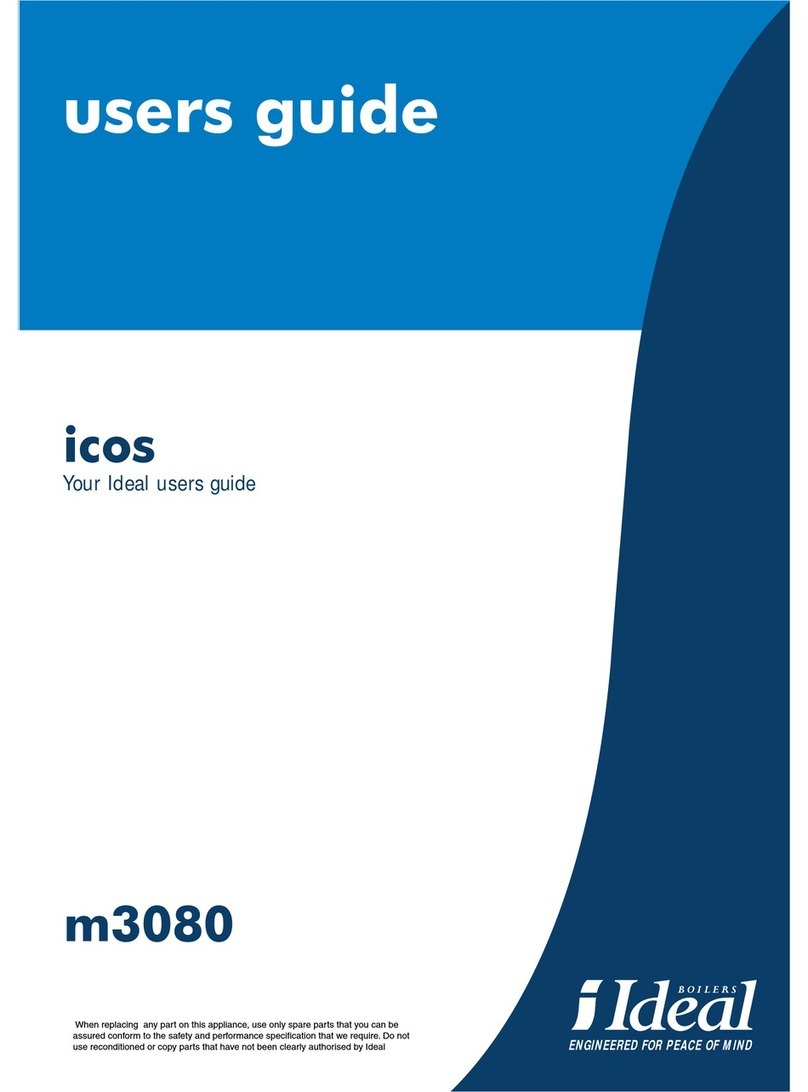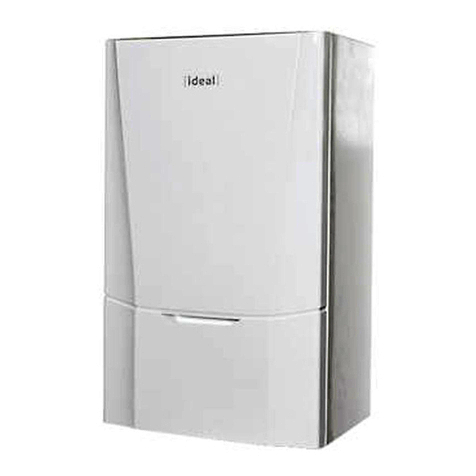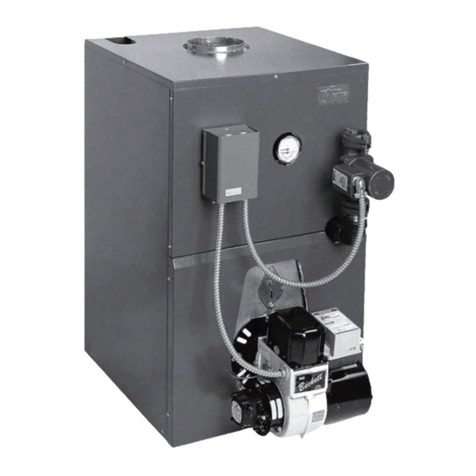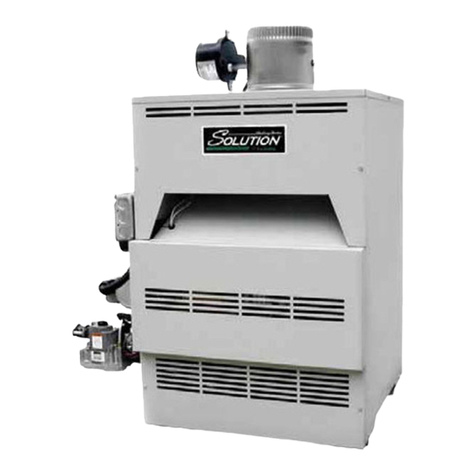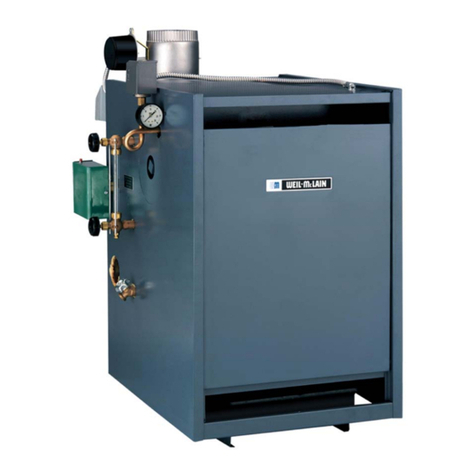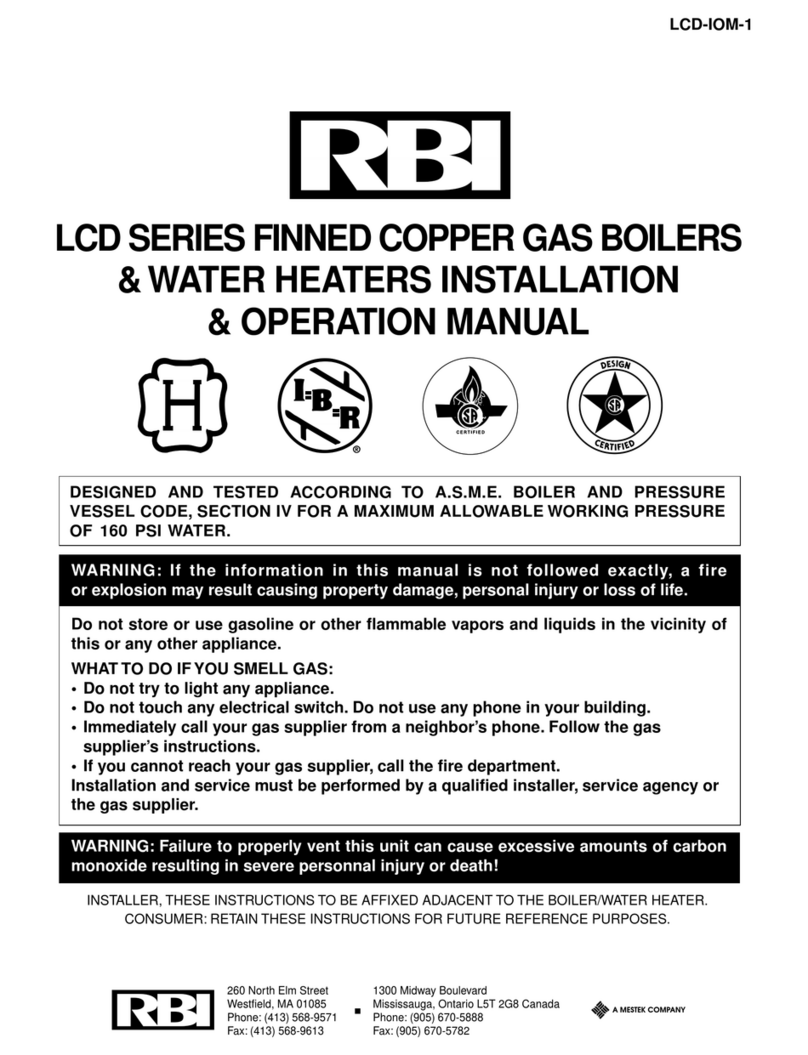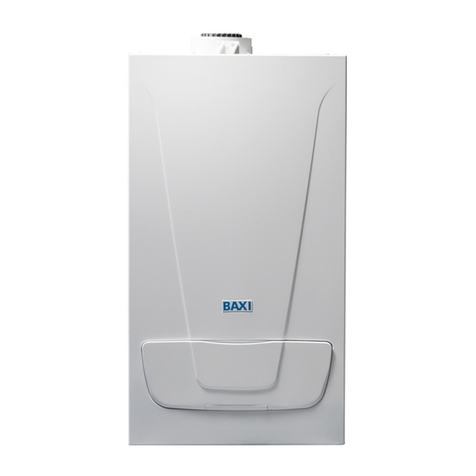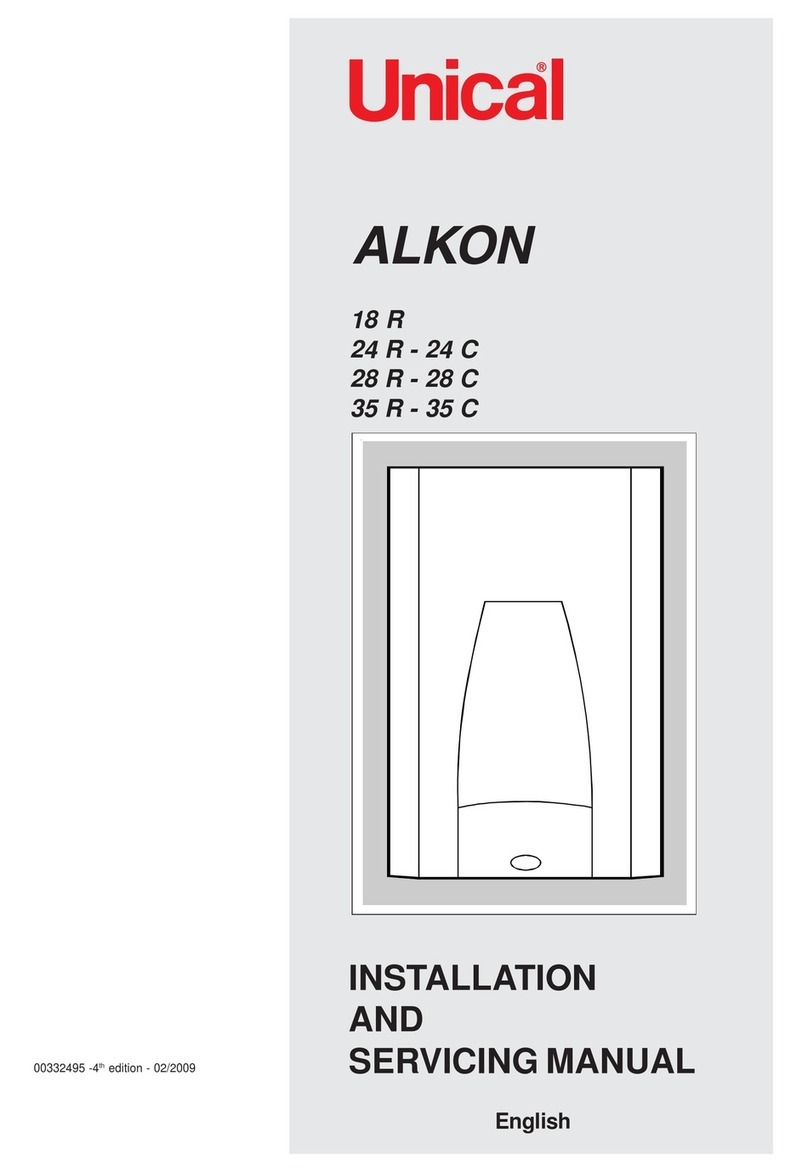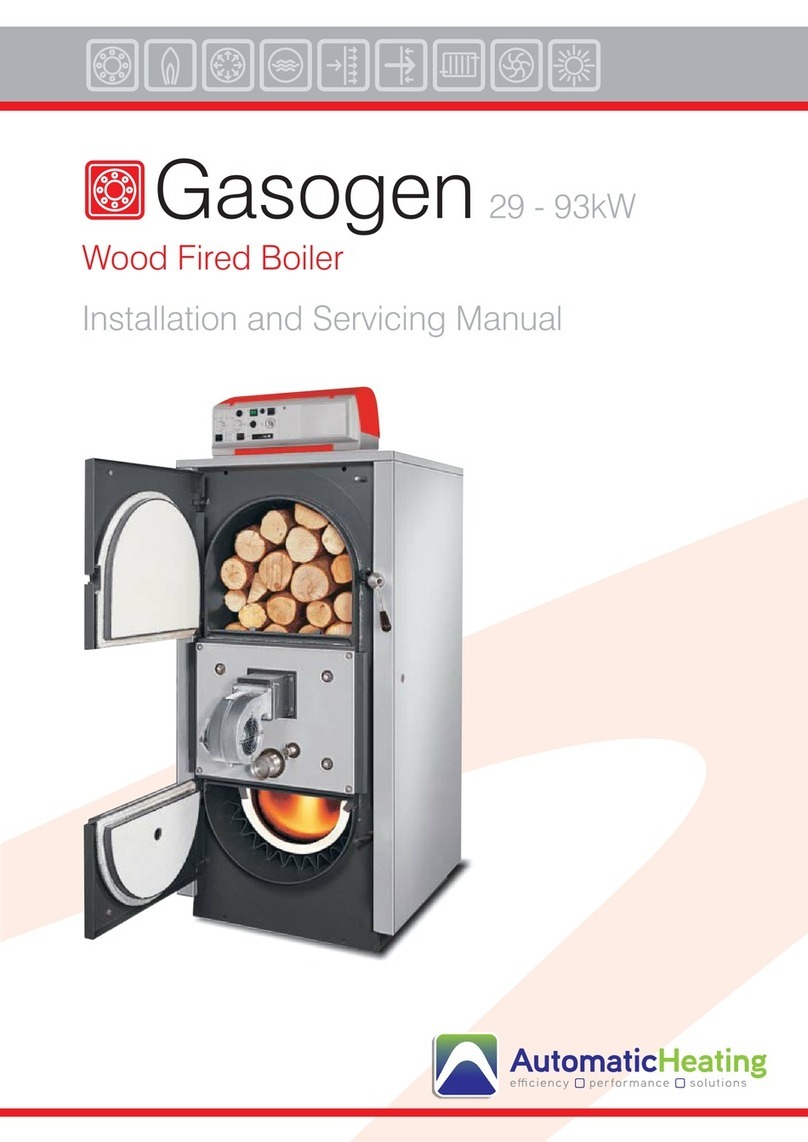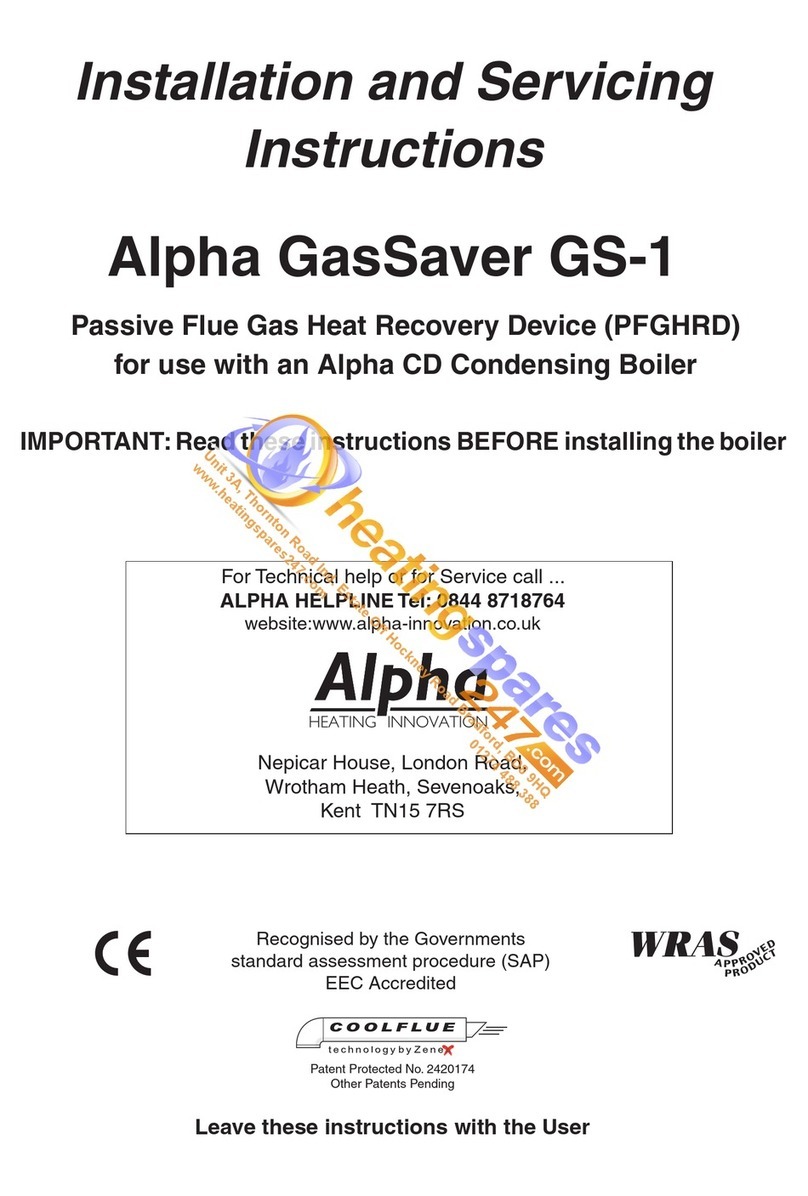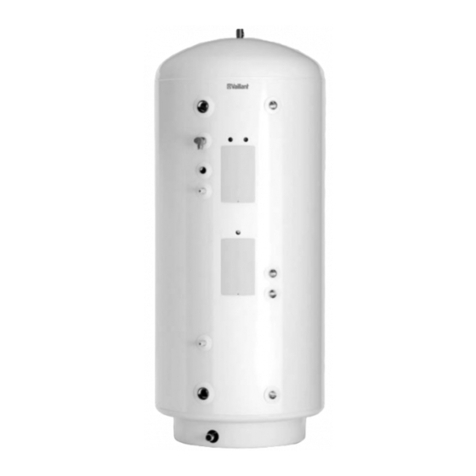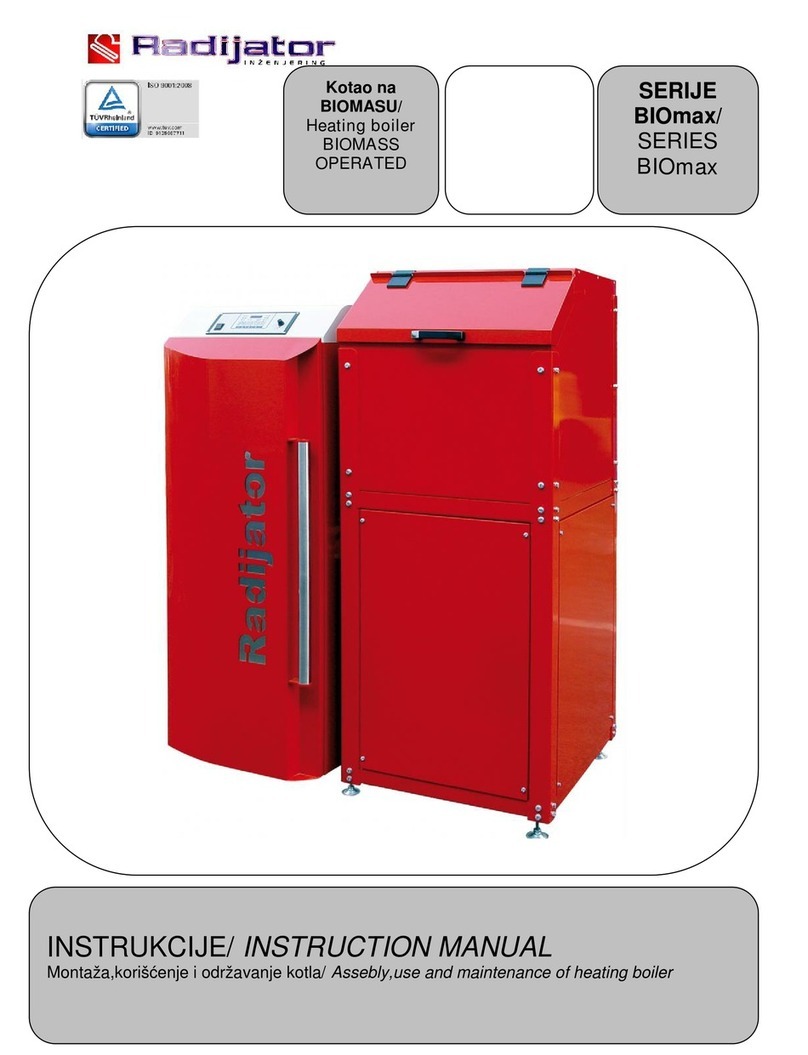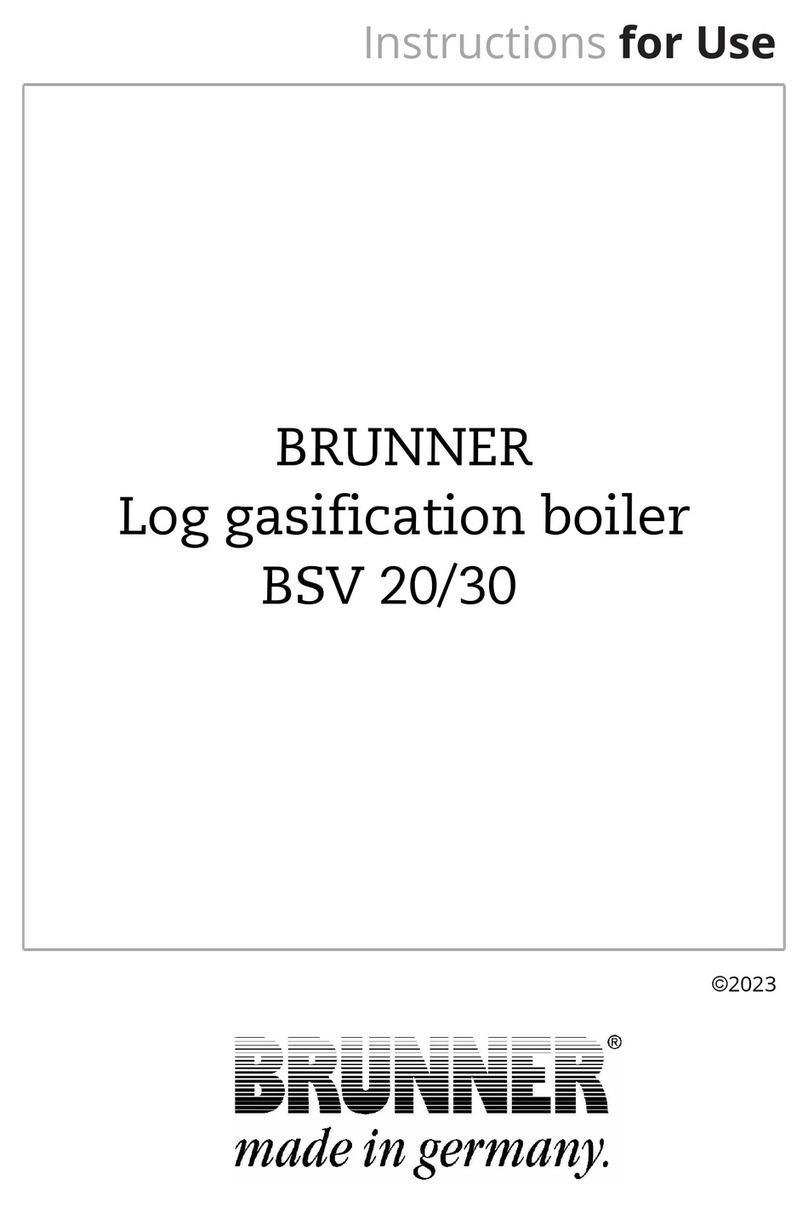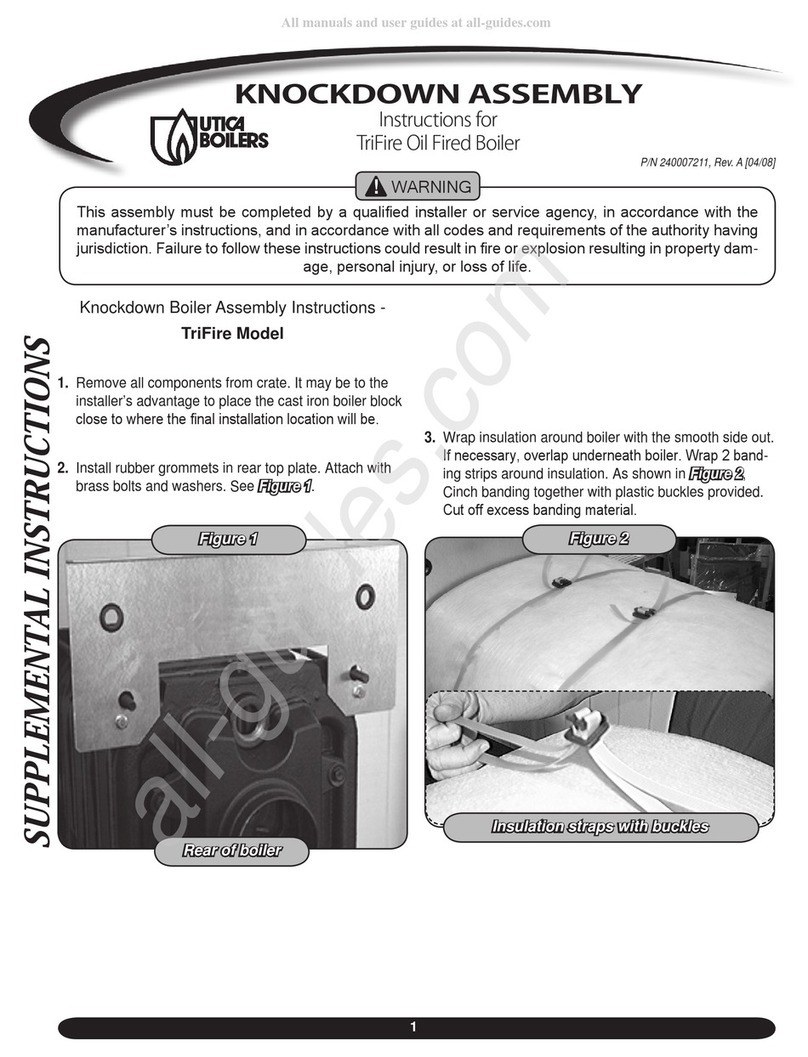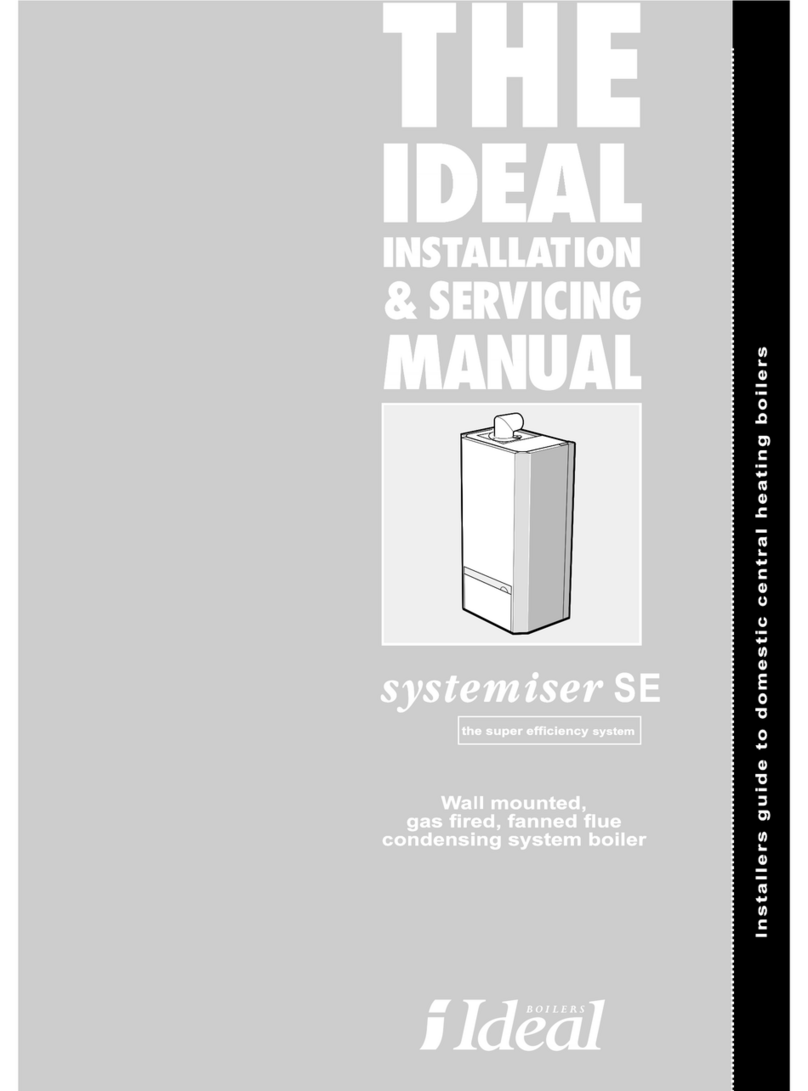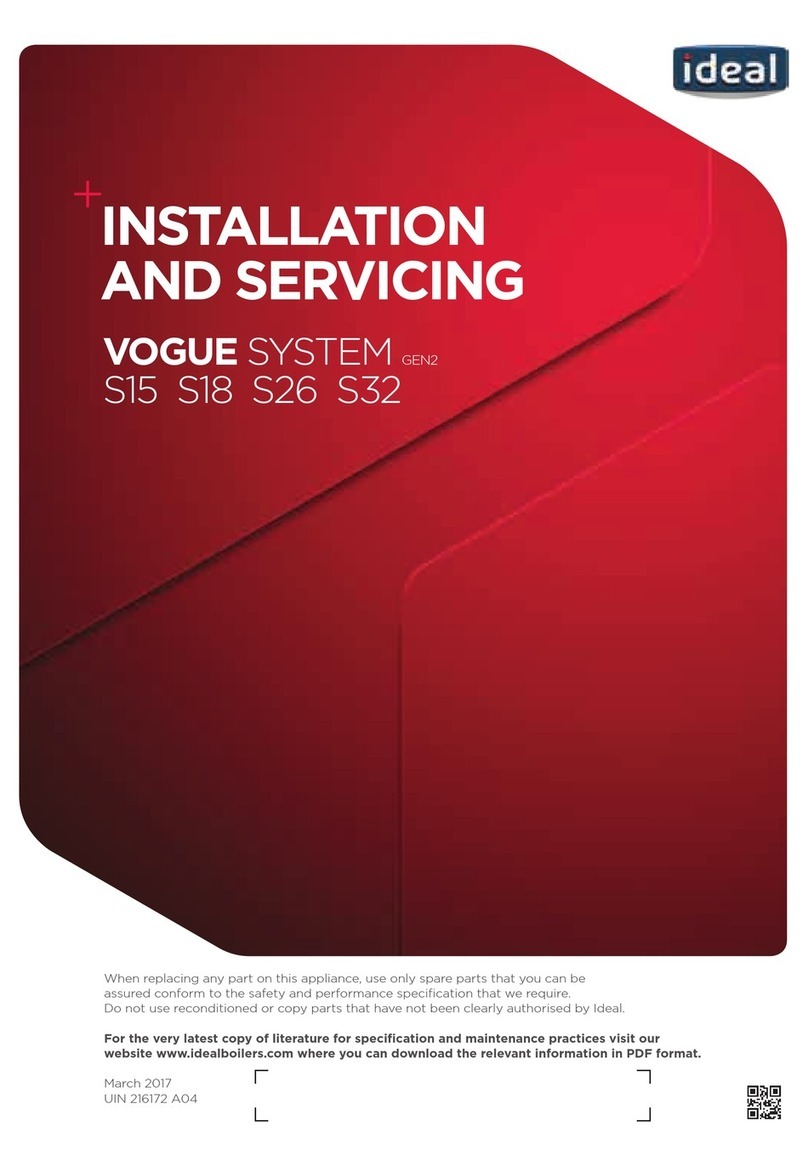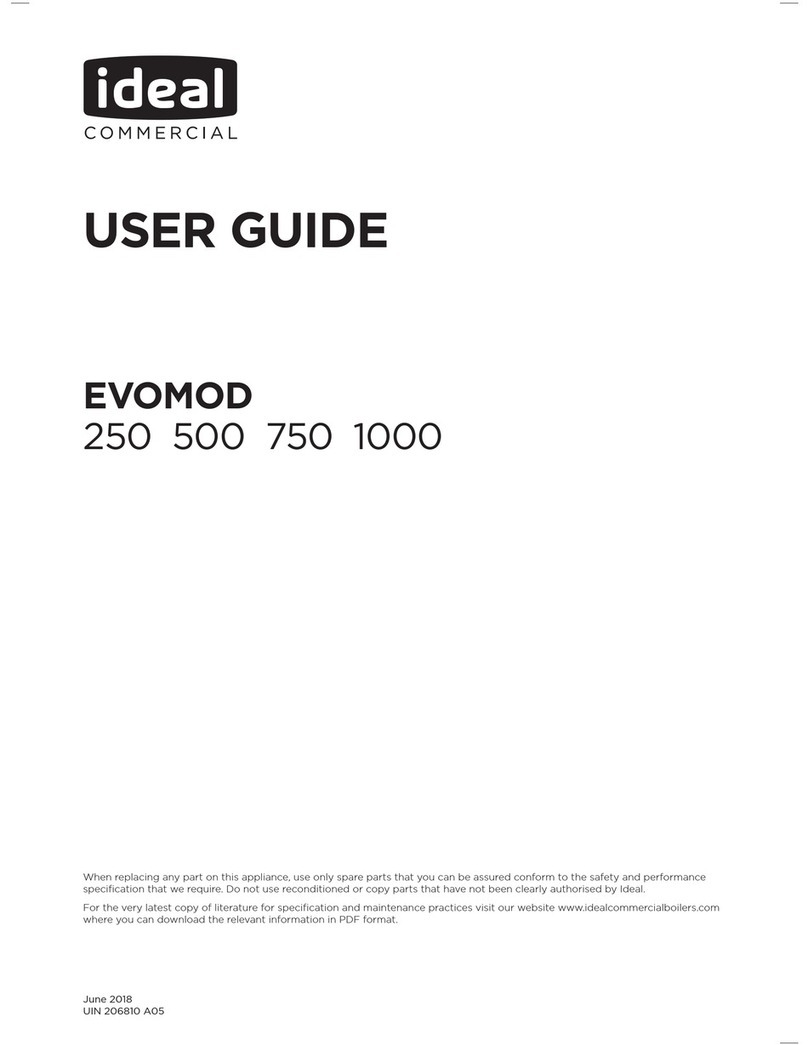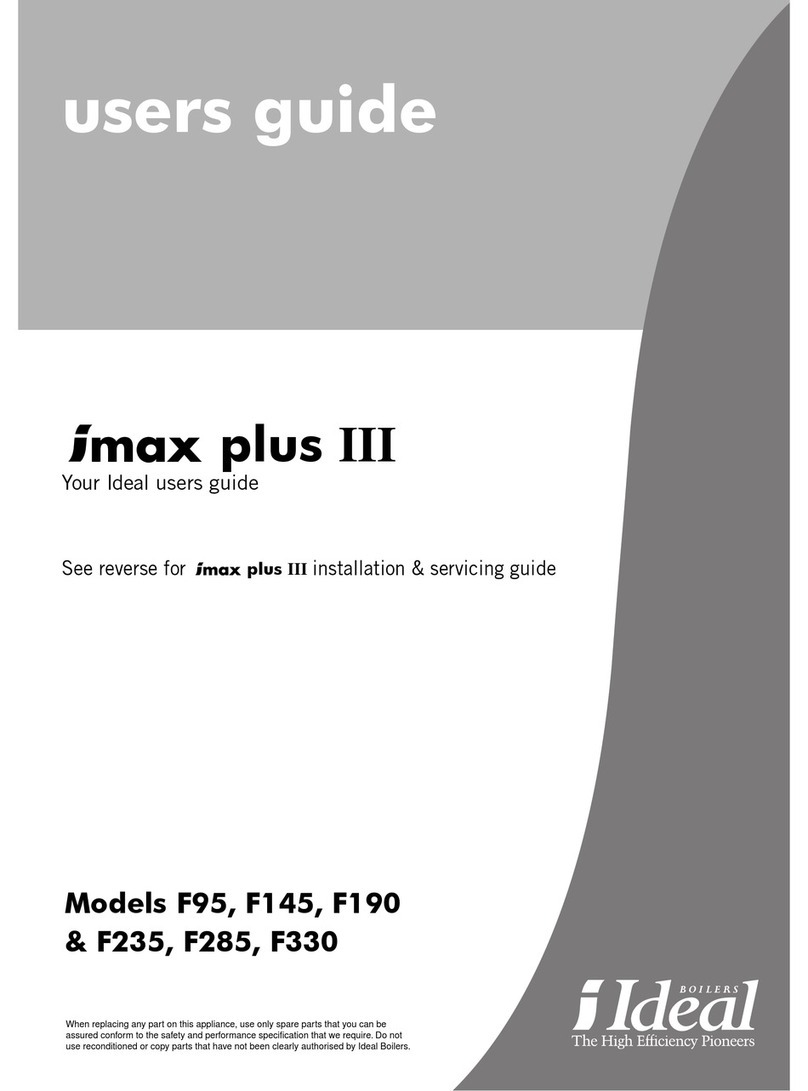
7isar combination condensing - Installation and Servicing
GENERAL
2. It is important that the position of the terminal allows the
free passage of air across it at all times.
3. Minimum acceptable spacing from the terminal to
obstructions and ventilation openings are specified in
Table 4.
4. Where the lowest part of the terminal is fitted less than 2m
(6'6") above a balcony, above ground or above a flat roof to
which people have access then the terminal MUST be
protected by a purpose designed guard.
Terminals guards are available from boiler suppliers. In
case of difficulty seek advice from:
Grasslin (UK) Ltd.,
Vale Rise, Tonbridge, Kent TN9 1TB
Telephone No. 01732 359 888
Ensure that the guard is fitted centrally.
5. Where the terminal is fitted within 850mm (34") of a plastic or
painted gutter or 450mm (18") of painted eaves then an
aluminium shield at least 750mm (30") long should be fitted
to the underside of the gutter or painted surface fitted
centrally above the flue.
6. The air inlet/products outlet duct and the terminal of the
boiler MUST NOT be closer than 25mm (1") to combustible
material. Detailed recommendations on the protection of
combustible material are given in BS. 5440: Part 1, 2000.
IMPORTANT. It is absolutely essential to ensure, in practice,
that products of combustion discharging from the terminal
cannot re-enter the building or any other adjacent building
through ventilators, windows, doors, other sources of natural air
infiltration, or forced ventilation / air conditioning.
If this should occur the appliance MUST be turned OFF, labelled
as 'unsafe' until corrective action can be taken.
TERMINAL
The terminal assembly can be adapted to accommodate various
wall thicknesses. Refer to Frame 8 - Unpacking.
AIR SUPPLY
It is NOT necessary to have a purpose-provided air vent in the
room or internal space in which the boiler is installed. Neither is
it necessary to ventilate a cupboard or compartment in which the
boiler is installed, due to the low surface temperatures of the
boiler casing during operation; therefore the requirements of BS
6798, Clause 12, and BS 5440:2 may be disregarded.
WATER CIRCULATION SYSTEM
The central heating system should be in accordance with BS.
6798 and, in addition, for smallbore and microbore systems, BS.
5449.
Draining taps MUST be located in accessible positions, which
permit the draining of the whole system. They should be at least
1/2" BSP nominal size and be in accordance with BS 2879.
WATER TREATMENT - see Frame 6
GAS SUPPLY
The local gas supplier should be consulted, at the installation
planning stage, in order to establish the availability of an
adequate supply of gas. An existing service pipe must NOT be
used without prior consultation with the local gas supplier.
The boiler MUST be installed on a gas supply with a governed
meter only.
A gas meter can only be connected by the local gas supplier or
by a registered CORGI engineer.
An existing meter should be checked, preferably by the gas
supplier, to ensure that the meter is adequate to deal with the
rate of gas supply required. A minimum working gas pressure of
20 mbar should be available at the boiler inlet.
Do not use pipes of a smaller size than the boiler inlet gas
connection.
IMPORTANT.
Installation pipes MUST be fitted in accordance with BS. 6891.
Pipework from the meter to the boiler MUST be 22mm O.D.
The complete installation MUST be tested for gas soundness and
purged as described in the above code.
FLUE INSTALLATION
Pluming will occur at the terminal, so where possible, terminal
positions where this could cause a nuisance should be avoided.
The flue must be installed in accordance with the
recommendations of BS. 5440: Part 1, 2000.
The following notes are intended for general guidance:
1. The boiler MUST be installed so that the terminal is
exposed to external air.
Table 4 - Balanced flue terminal position
Terminal Position
Minimum Spacing
1. Directly below or alongside an
opening window, air vent or other
ventilation opening 300 mm (12")
2. Below guttering, drain pipes or soil
pipes 75 mm ( 3")
3. Below eaves 200 mm ( 8")
4. Below balconies or a car port roof 200 mm ( 8")
5. From vertical drain pipes or soil pipes 150 mm ( 6")
6. From internal or external corners 300 mm ( 12")
7. Above adjacent ground, roof or
balcony level 300 mm (12")
8. From a surface facing the terminal 600 mm (24")
9. From a terminal facing a terminal 1200 mm (48")
10. From an opening in a car port
(e.g. door or window) into dwelling 1200 mm (48")
11. Vertically from a terminal on the
same wall 1500 mm (60")
12. Horizontally from a terminal on the wall 300 mm (12")
